XS Sights has been in the business for nearly 30 years and is 100% American-made. I was first introduced to its famous Big Dot sights when the DEA put them on every 870 shotgun that we fielded. I liked how quick and easy they were to acquire under stress. In fact, I had tritium Big Dots put on my J frame revolvers that I carried undercover for the same reason. Since then, I have always looked at XS whenever I needed sights for a duty gun. And now XS Sights offers fiber optic sights, and I am liking them.
XS Sights Add New Fiber Optic Line
These days, I spend more time at competitions. Fiber optic sights are faster and easier for me to acquire than my old tritium ones during bright daylight hours. Years ago, all of my Glocks were set up with Tritium night sights. The ones that I wasn’t carrying on duty slowly worked their way to the back of the gun safe and collected dust. Last week, that all changed.
I was contacted by my editor, who told me XS Sights was finally releasing a fiber optic sight for Glocks. So, he asked if I would be interested in doing a T&E. As luck would have it, I was registered for a USPSA match that very weekend.
I pulled out a 3rd Gen Glock 35 that I used to love carrying for building raids. It hadn’t seen daylight since almost all U.S. law enforcement switched from .40 to 9mm about ten years ago. So, I threw a Lone Wolf 9mm conversion barrel into it and waited for the sights to arrive.
Installing the Fiber Optic Sights
As soon as they were delivered, I took them and the pistol to the garage. An original Glock sight pusher made short work of removing a burnt-out tritium night sight. Then, I used it to install the new CNC-machined, steel, XS rear sight.
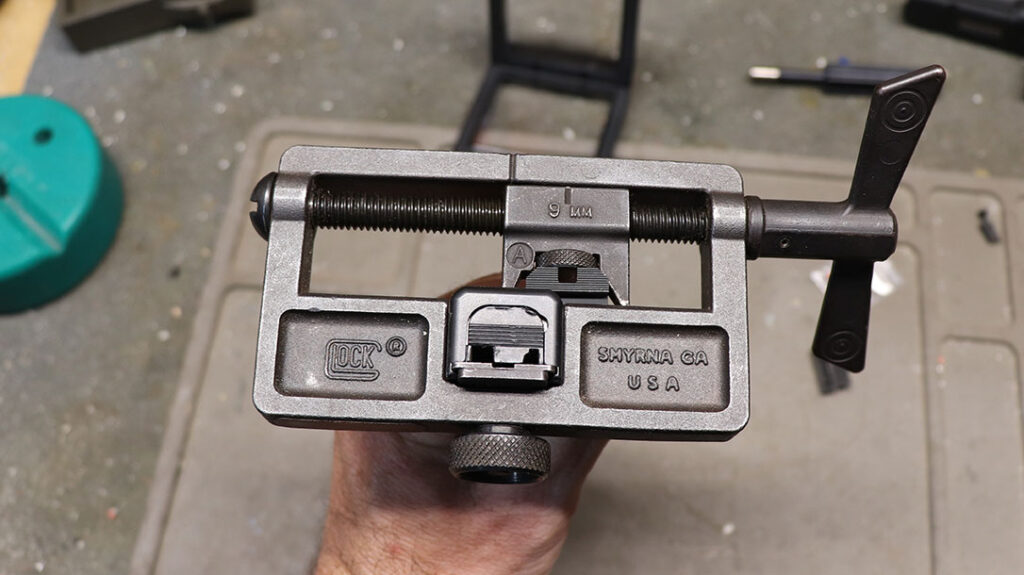
Next, I grabbed my Glock sight tool, unscrewed the old tritium sight, put a dab of blue Loctite (medium strength) on the threads of the new sight, and screwed it on. I made sure to pay careful attention to make sure the front sight was straight and not canted.
I have installed hundreds of Glock sights for cops, and I learned a couple of things. First, you want a magnetic front sight tool. The other ones work, but that magnet makes life a lot easier.
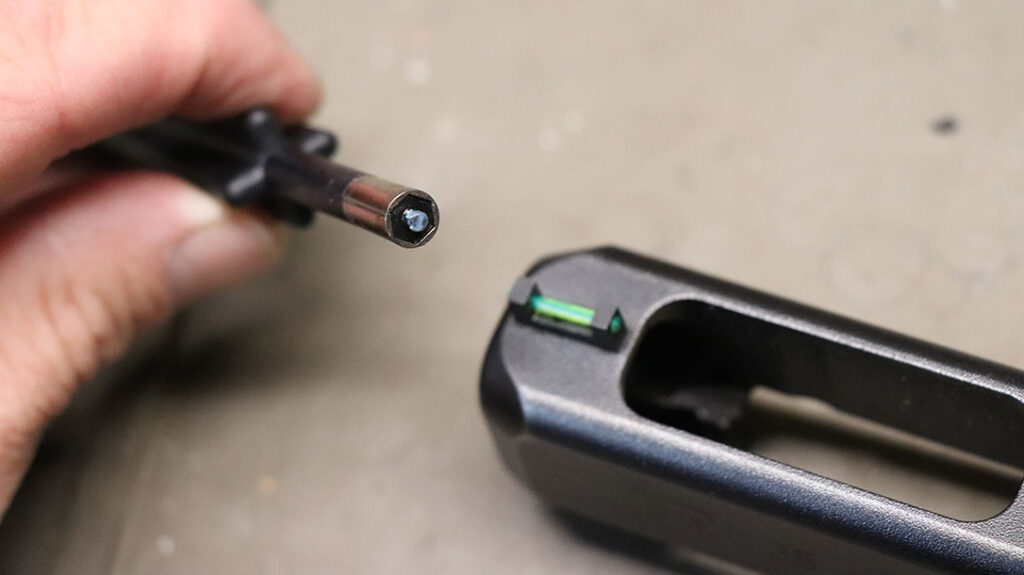
Second, a dab of blue Loctite on the threads is always a good idea. XS Sights recommends red Loctite, which is basically permanent. Personally, I’ve never had a set of sights come loose using the medium strength.
XS Sights also recommends using permanent Loctite around your rear sight once it’s dialed in exactly where you want it. I have never used Loctite on my rear sights. But XS certainly has more experience in this area than I do.
Initial Impressions
My initial impressions of the sights were very good. First, they have a very wide rear notch. For combat or competition, a wide rear notch makes it faster to find your front sight and frame it in.
Next, it has a deep rear notch—I can’t remember seeing a deeper one. Again, this helps the shooter focus on the front sight, where they should.
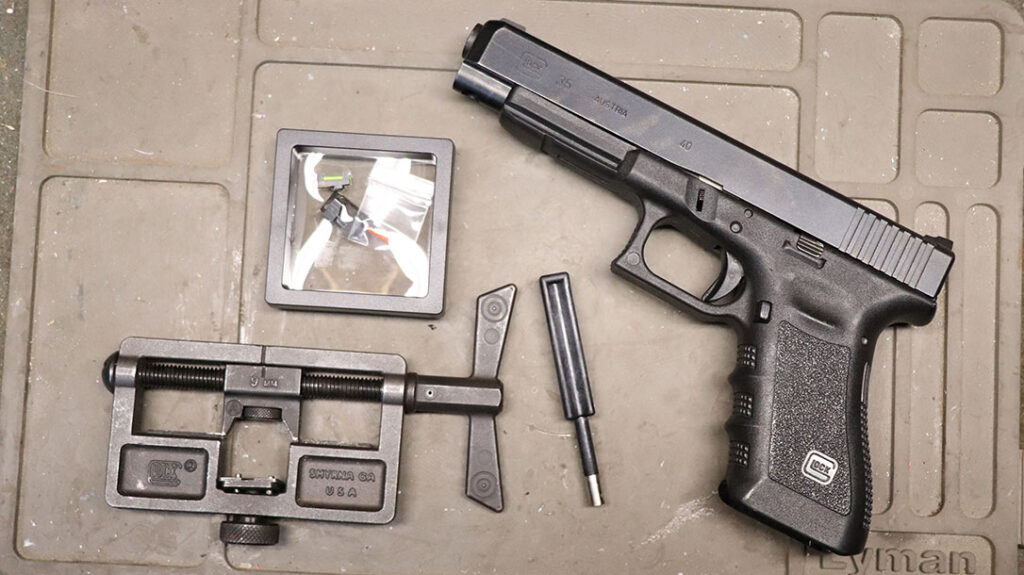
Finally, the rear sight had deep horizontal serrations and a good matte black finish. All of this helps make the rear sight fade into the background and less noticeable in your sight picture. Additionally, it removes glare and keeps your focus on the front sight, where it must be for an accurate shot.
Finally, the outside of the rear sight has angled corners. A very seasoned firearms instructor, that I admire, told me that testing has shown this reduces eye fatigue. I’ve never seen the study, so I won’t swear to it. However, I have noticed that feature on many of the nicer pistol sights and even some rifle sights. So, there may be something to it.
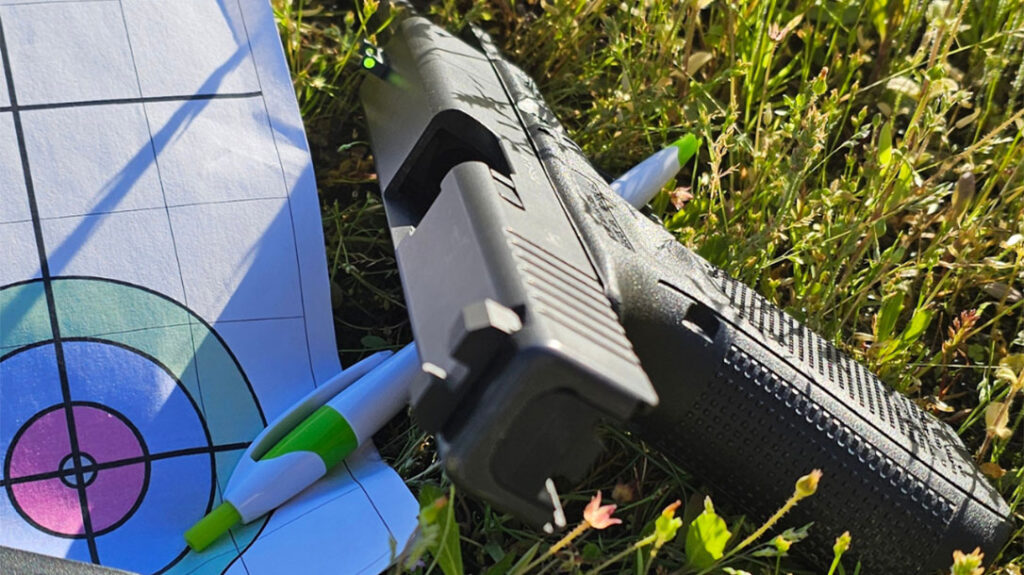
Shooting with the XS Fiber Optic Sights
Two days after I installed the sights, I headed to the Phoenix Rod and Gun Club for their USPSA match with five stages on the last Sunday of the month. The Rod and Gun Club remains a first-rate club. Although I’m not a member, I’m always impressed by how well-designed their stages are and how smoothly their events run.
I was the only one in my squad shooting a pistol in the production division. This was one of those times I found myself in a squad with much more experienced competitors, including two who were classified as masters.
It is humbling, but I actually prefer it because you can learn more by watching really good shooters. Plus, they often have some good advice on things that have helped them improve.
Over the five stages, the gun and the sights worked flawlessly, even if the shooter made a few errors. I had no chance to sight in the pistol, but the old sights had been bumped slightly to the right. On one plate rack, I consistently missed to the left, even when I slowed down and took my time.
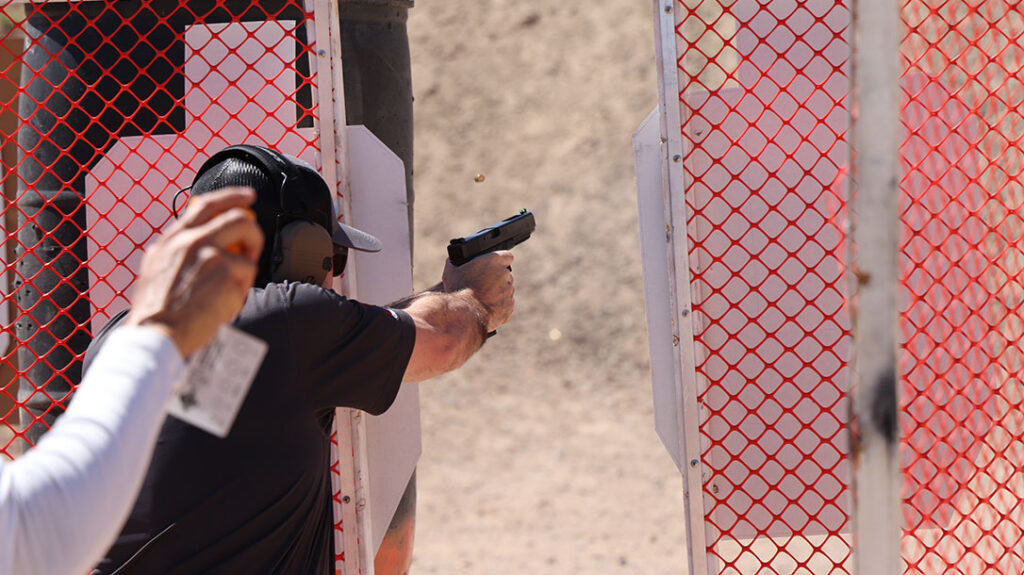
After that, between stages, I bumped the sights over to the right where the old ones had sat, and the problem was corrected. All misses after that landed squarely on my shoulders.
The green fiber optic was a huge improvement over 3-dot tritium sights for keeping your eye focused on it. I particularly like how quickly I was able to obtain it when transitioning between multiple targets.
I have had fiber optic sights where the rod kept falling out and had to be superglued in place. This one was as rock solid at the end of the competition as it was at the beginning.
Final Thoughts
So, how do the new XS Fiber Optic sights fare against other fiber optics? In terms of design, fit, and function, I would put them up against any others. My calipers show the rod as 1.5 mm thick. I know some fiber optic sights are only 1mm in diameter for more precise shooting. But for a USPSA match, I definitely prefer the larger and easier-to-see size.
The MSRP is $69.99, which seems pretty reasonable for all-steel, CNC-machined sights with this many features. I’m looking forward to a lot more competitions and trying out the red fiber optic next time.
For more information, please visit XSSights.com.
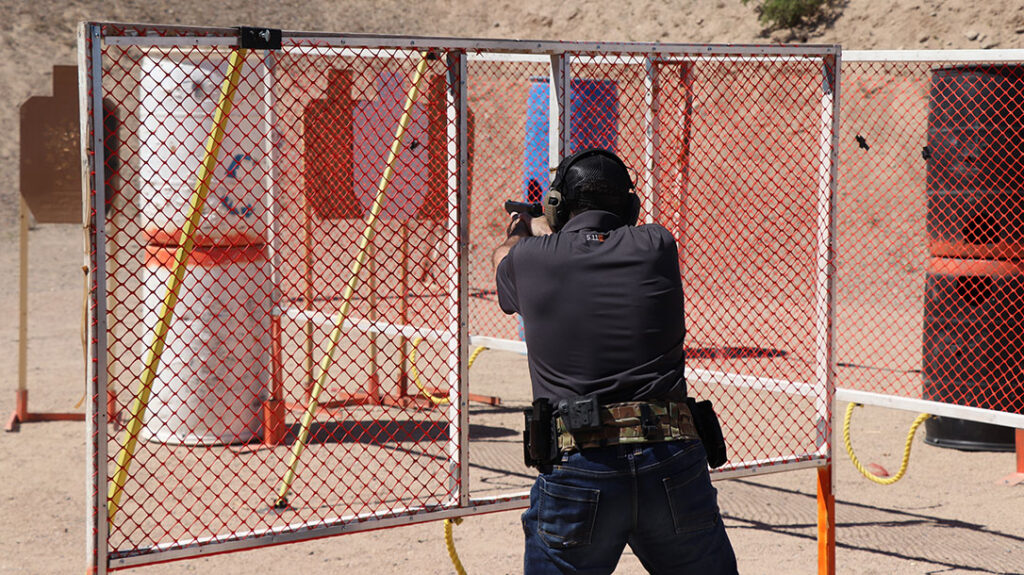


Didn’t find what you were looking for?
Read the full article here




